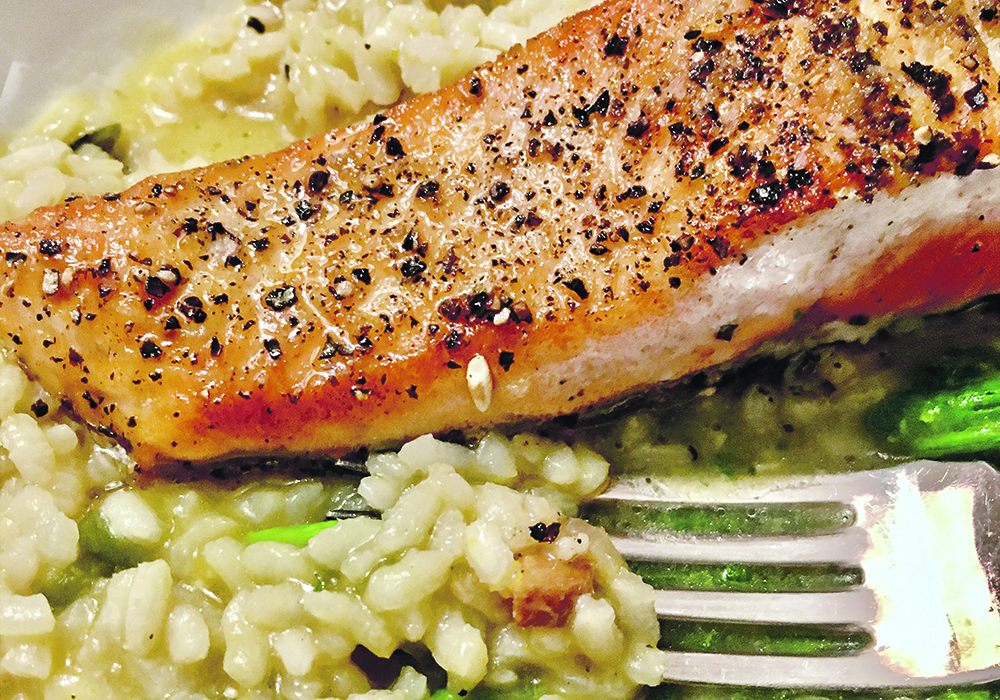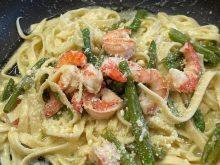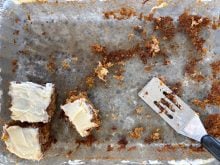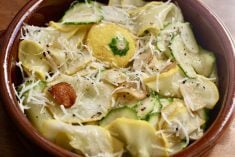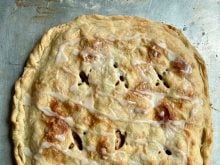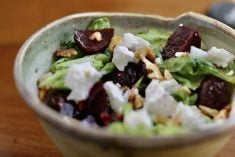Rice is not commercially grown in Canada, but it is well integrated into our diet and menus.
In recent years, I have seen a tremendous increase in selection at the grocery stores. This might be because of increased interest in gluten-free diets.
Most of Canada’s rice comes from the United States, as well as from Asian countries such as India and China. A smaller amount comes from Italy.
There are more than 40,000 varieties of rice in the world, classified into short, medium and long grain.
Read Also

Fuel rebate rule change will affect taxes and AgriStability
The federal government recently announced updates to the fuel rebates that farmers have been receiving since 2019-20.
Short grain is essential for sushi and sticky rice and is ideal for rice pudding. Medium grain rice is used in paella and risotto.
The short and medium grains are starchier and stick together yet maintain a firm texture. Long grain basmati is used in the cooking of northern India and in Persian dishes and jasmine is a staple in Chinese recipes.
Labels on both my white basmati and brown basmati show that a one-quarter cup serving of white rice has zero precent fibre while the brown has 12 percent of your daily requirement of fibre. Both have a small amount of iron and brown rice has a small amount of calcium. It is recommended to use brown rice, when possible, for the added nutritional benefits.
How to make perfectly cooked rice varies with the culture. Years ago, a Pakistani friend showed me her way to cook perfect basmati and I have followed those directions since.
Wash the rice until all surface starch is removed, put in a pot covered by three inches of salted water and boil until soft but still has “bite”. Drain in a colander or sieve and throw a clean kitchen towel over it and let it steam until serving time.
Stuffed kabocha squash
- 1/2 lb. ground lamb 250 g
- 1 c. brown basmati rice 250 mL
- 1 onion, diced
- 1 carrot, diced
- 1 bell pepper, diced
- 1/2 c. tomato sauce 125 mL
- 1 kabocha squash
Sauté lamb until browned. Add diced onion, carrot and bell pepper and continue to cook until softened. Meanwhile, boil rice until tender and drain. Add to lamb mixture.
Remove the stem end from the squash and scoop all the seeds. Fill with the lamb mixture and top with tomato sauce. If there is extra filling, use it to stuff bell peppers, tomatoes or onions.
Bake in a 350 F (180 C) oven until the squash is very tender, about one hour.
Basic risotto
This is a blank slate for any flavours or ingredients you want to add to the meal.
I like to use seasonal vegetables and sometimes a pinch of saffron, added early in the process so it will hydrate.
Pan-seared steelhead trout completed the meal.
- 6 c. chicken stock 1.5 L
- 3 tbsp. extra virgin olive oil 45 mL
- 2 small shallots, minced
- 2 c. arborio rice 500 mL
- 1 c. dry white wine 250 mL
- 1/2 c. grated parmesan cheese 125 mL
- kosher salt and freshly ground black pepper, to taste
Heat stock in a large saucepan over medium heat and keep warm. Heat olive oil in another large saucepan over medium-high heat. Add shallots.
Cook until soft but not browned, about four minutes. Add rice. Cook until lightly toasted, about four minutes. Add wine. Cook until evaporated, about two minutes.
Add 1/2 cup (125 mL) warm stock and cook, stirring, until absorbed, about two minutes. Continue adding stock, 1/2 cup (125 mL) at a time, and cooking until absorbed before adding more, until rice is tender and creamy, about 15 minutes total.
Be sure to keep the rice creamy and don’t let it become thick or dry.
Stir in parmesan cheese. Season with salt and pepper.
If you are adding vegetables, add them at a point they will be cooked to your satisfaction when the risotto is done. This takes a bit of judgment. I would coarsely chop vegetables, such as asparagus, green beans, fiddleheads or spinach.
Grandma’s rice pudding
- 1/4 tsp. salt 1 mL
- 3/4 c. sushi rice or other short grain white rice 175 mL
- 1 3/4 c. water, to boil the rice 425 mL
- 1 cinnamon stick or use 1 tsp. regular cinnamon or more, to taste 5 mL
- 3/4 c. sugar 175 mL
- 2 c. whole milk or half and half 500 mL
- 3/4 c. extra milk 175 mL
- 1/4 c. raisins, figs or dates chopped 60 mL
- 1 egg, beaten
- 2 tbsp. butter 30 mL
- 1 tbsp. pure vanilla extract 15 mL
In a small saucepan add 1 3/4 cups (425 mL) water, one cinnamon stick or ground cinnamon and one teaspoon (5 mL) salt. Bring to a boil. Add the rice to the pot on a low simmer. Cover and cook for 12 minutes or until soft. Remove the lid for the last couple of minutes of cooking to be sure all the water is absorbed or evaporated. About 15 minutes.
Stir in two cups (500 mL) milk and sugar. Cook for about 30 to 35 minutes or until creamy and thick like a pudding and not watery looking, stirring occasionally on low heat.
Stir in the last 3/4 cup of milk, the beaten egg and raisins, if using, and keep stirring on medium heat, stirring constantly, about another two minutes.
Remove cinnamon stick and remove from the heat. Stir in the butter and vanilla and mix evenly.
Garnish with a sprinkle of cinnamon or freshly grated nutmeg.
Ukrainian cabbage rolls
The name for stuffed cabbage rolls in the Ukrainian language is holubtsi.
There are dozens of variations for fillings in different regions of Ukraine, including meatless ones as well as different combinations of meat, vegetables and grains.
For wrapping, Ukrainians use fresh or pickled cabbage leaves, in the springtime replaced with grape leaves in the southwest and with red beet leaves in other parts of the country. The cooking liquid may be tomato juice, broth and sour cream.
The size of cabbage rolls also differs. In the Left Bank Ukraine holubtsi are made from the whole cabbage leaf, so they are big, while in the west a cabbage leaf is divided into several pieces, so the rolls are smaller.
- 1 carrot
- 1 onion
- 3/4 c. long grain rice, such as basmati 175 mL
- 1 head of cabbage
- 2-3 cloves of garlic
- 3 fresh parsley sprigs
- 1 lb. lean ground pork 500 g
- 2-3 tomatoes or 2 tbsp. of tomato sauce 30 mL
- sour cream, for serving
- ground black pepper, to taste
- salt, to taste
Wash cabbage leaves, put them in salted boiling water and cook one to two minutes until soft. Remove from water and drain. Cut out a thick centre part of each leaf at the bottom of its stem.
Sauté the onion and carrot until they are a golden colour. Wash and chop parsley. Rinse and finely chop tomatoes. Set aside.
Wash rice and boil it until half done. Peel garlic cloves and crush them. Mix minced pork, rice, garlic, tomatoes and parsley together. Stir everything thoroughly. Season the stuffing with salt and ground black pepper.
To roll holubtsi, put a cabbage leaf on a flat surface with the stem end facing you. Place about 2⁄3 cup (150 mL) of the filling in the centre of the leaf. Fold in the sides and roll the leaf over firmly to enclose the filling. Then fold the leaf under itself to create a tight bundle. Repeat with the remaining leaves and filling. If you are using smaller pieces of cabbage leaves then use about two tablespoons (30 mL) of filling.
Arrange stuffed cabbage rolls in an oven-safe pan, like a shallow roasting pan or Dutch oven, next to each other so they won’t unravel. Pour boiling water over holubtsi and add the mixture of fried onion and carrots. Simmer the rolls in the oven for about an hour, or until tender.
I use all the cabbage trimmings to make a bed on the bottom of the pan. This prevents the rolls from sticking to the pan. (Source www.ukrainian-recipes.com)
Sarah Galvin is a home economist, teacher and farmers’ market vendor at Swift Current, Sask., and a member of Team Resources. She writes a blog at allourfingersinthepie.blogspot.ca. Contact: team@producer.com.

